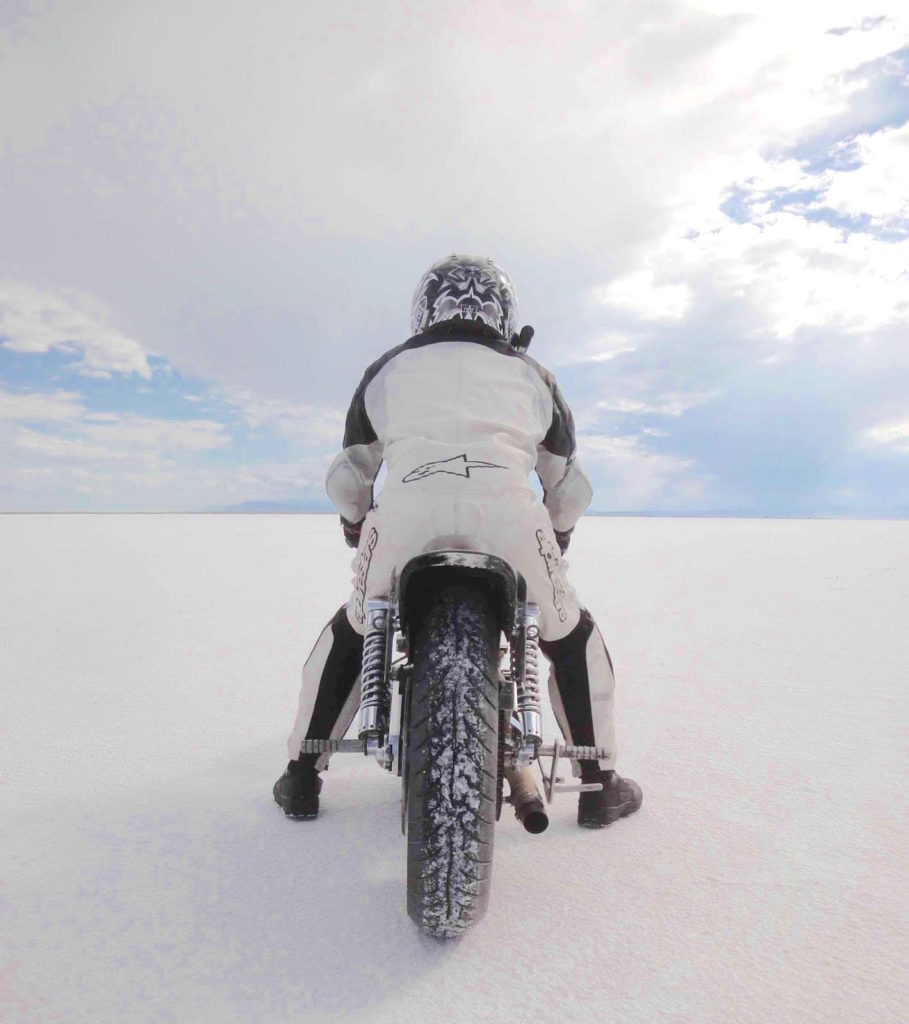
Bonneville is still a lake at times, as every winter the 4000’ altitude brings rain enough to fill the shallow basin with a few inches, refreshing the surface as a season-long tide smoothing the surface. The alluvial deposits ringing the lake grow a salt-resistant scrub as they descend to the flat, dotting the now-dry waterline with tufts of soft green for a mile as packed silt gives way to a dusting of white, then a thin and soft crust, and finally, a mile and a half from the edge, an inch-thick, hard layer of million-year old salt.
The salt is a terrible place to go fast, and the worst possible place for machinery.
But the salt is disappearing, the hard center pan shrinking every year, as the winter lake is pumped away to extract valuable minerals. The mining companies are obligated to return the salty water and refill the basin, but this costs money, and their years of skimping leave less and less salt, and a grassroots movement to ‘save Bonneville’
The center of the salt flats is no place for a human, utterly forbidding, with no water, no plants, no bugs, visually disorienting, and plenty hot. The nearby mountains are no guide to scale or distance, their bases floating on mirages, the dry clarity of the air bringing them close, but an exploratory hike in any direction will see you plodding for hours, overheated and dehydrated. For all its inhospitality, the salt remains a place of extreme beauty, a photographer’s paradise, a massive white canvas stretched horizon to horizon, making art of anything placed upon it. Every hour of the day, every mood of cloud, sun, or evaporating rain is simply stunning, the most so with a bright blue sky touching the white under your feet in every direction.
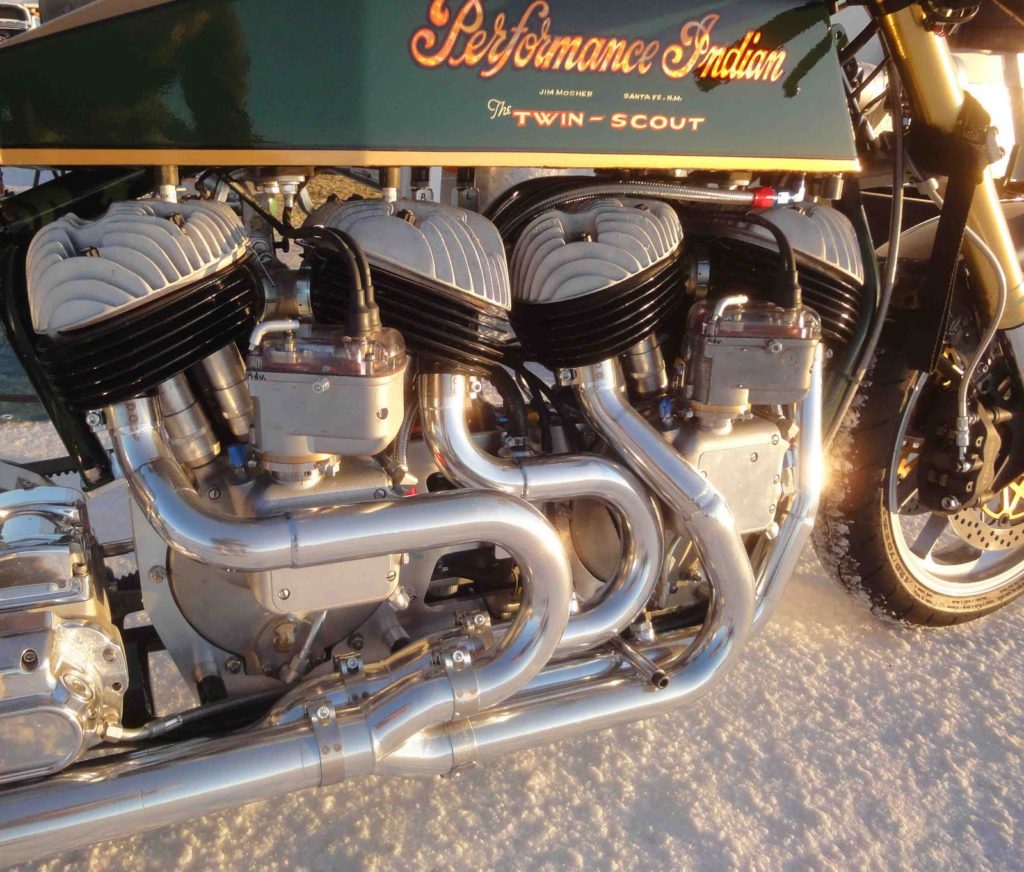
Bonneville is also the worst possible place for machinery. Corrosive salt cakes every crevice and cranny, refusing to leave, eating away at anything metal. Washing your machine, your car or motorcycle, is a good idea, and a joke. If you don’t strip your motorcycle down to the nuts, crankshaft, and spokes, you won’t have a motorcycle in a few months; certainly not a safe or rideable one. The salt will eat your chain first, then your steering head bearings and spoke nipples, and eventually start on your frame, because when you washed your machine, liquid salt went inside too. Rental car companies will charge $1000 if they find salt caked under your car, as you’ve effectively destroyed it (although they’ll just sell it to someone else).
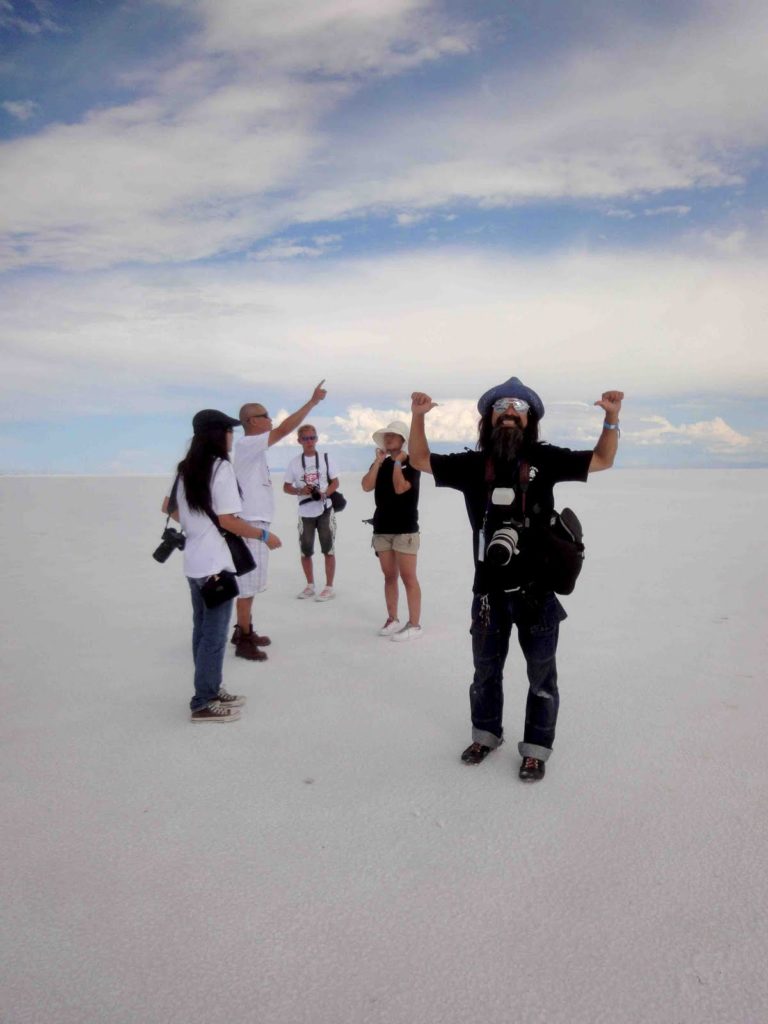
The salt is also terrible place to go fast. Yes it is generally packed firm, on a good year, although on a bad year even the scraped-smooth racing lines will have soft spots hungry for your speed. Packed salt gives poor traction, being greasy and slick, with loose bits scattered over the top, and applying power is a delicate business. Plenty of powerful machines simply cannot put all their horsepower through the wheels, and calculating wheelspin into rpm/speed readings is a fine art. Typically estimated at 10% of your wheel rotation, what this means is you’re doing a white burnout all the way down the line. A too-rapid course correction, say after a gust of wind, could well have you spinning off course, or far worse. Braking is a bad idea too, for the same reason; what you are riding on is best thought of as salted ice. Flat yes, fairly smooth (but pretty bumpy in the pilot’s seat), slippery and treacherous for the very people who cannot keep away; acolytes of the cult of Speed.
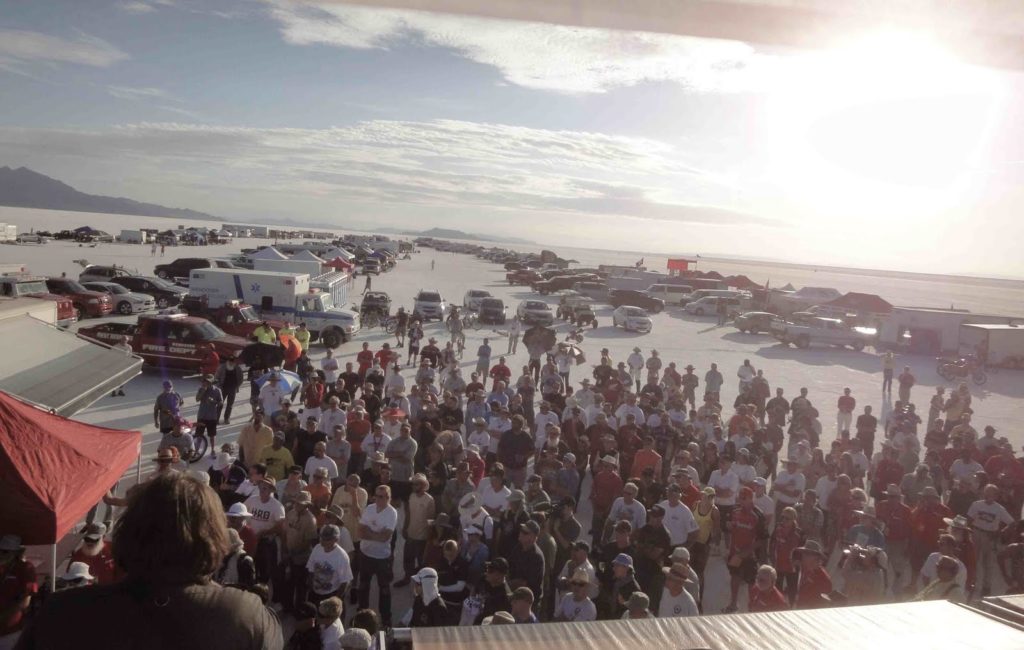
They come from all over the world. Denmark, Australia, Germany, England, Japan, Canada. It is the most truly international of all race meetings, all comers in a salty embrace. The racers are sometimes rivals, but to a man (and woman), their only true foe is Time, and against clocks they battle, any hundredth of a second shaved from a measured mile a victory. Time is not the enemy though – the salt is. Time will kill us all in the end, but the salt might get there first, or simply bedevil your years-long preparations with niggling little problems, or catastrophic ones. The beginning of a Speed Week at Bonneville creates a mechanical village in the center of nowhere, a 6 mile drive into white blankness, a huddle of trailers, canopies, big rigs and motorhomes huddled close in the vastness. By the third day, holes in the gypsy camp appear as dejected racers and destroyed machines skulk home, to try again next year, or not.
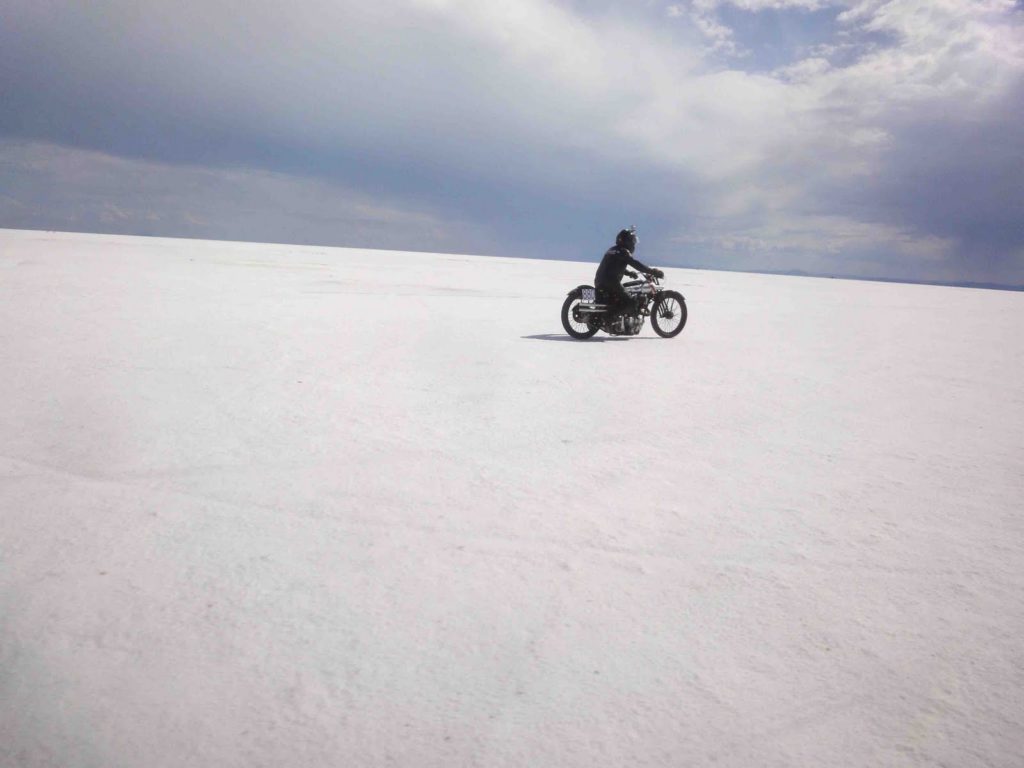
Every vehicle has a crew attached, sometimes just a patient wife providing water and company to a sweaty middle-aged man out for a little low-cost fun on a vintage Suzuki two-stroke. Sometimes the sheltering canopies host spreading mobs of interested semi-participants and hangers on, out to see what their favorite will do, eager to lend support and good cheer, even when magnetos go south or mysterious misfires have riders cursing the gremlins tormenting their labor, and their patience.
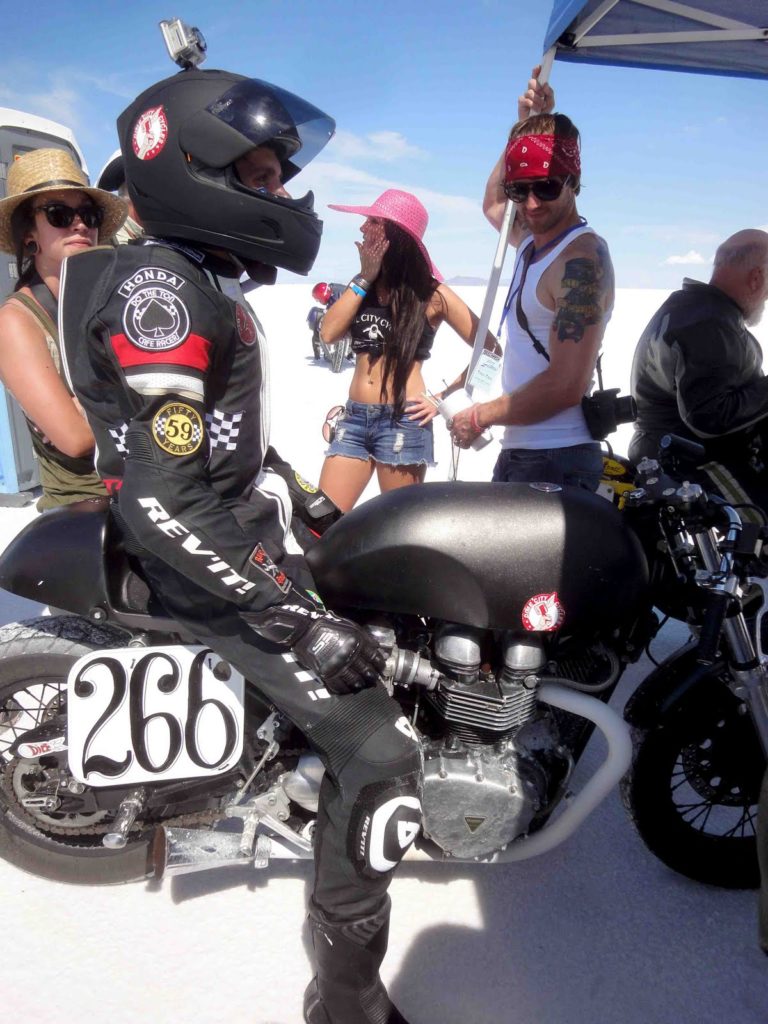
Some crews seem to hoard luck, making easy runs at eyebrow-arching speeds, with ratty looking contraptions or immaculate objects of beauty; there is no predicting who will do well by appearance, neither of machine, man, or crew. Every camp has a ‘vibe’ and a look about it; some clean and simple and Scandinavian, some scruffy and full of apparently unrelated metal objects in a good-humored jumble, some professional and cold. Again, no predictor. Some of the most impressive machinery, mighty and awesome in its supercharged, nitro-injected, double-engine streamlinitude, are utterly impotent, posting times bested by 40 year old mid-capacity road bikes. Gremlins; sometimes permanent ones. These sites you avoid, knowing the money and time invested, thinking ‘but for grace, there go I…”
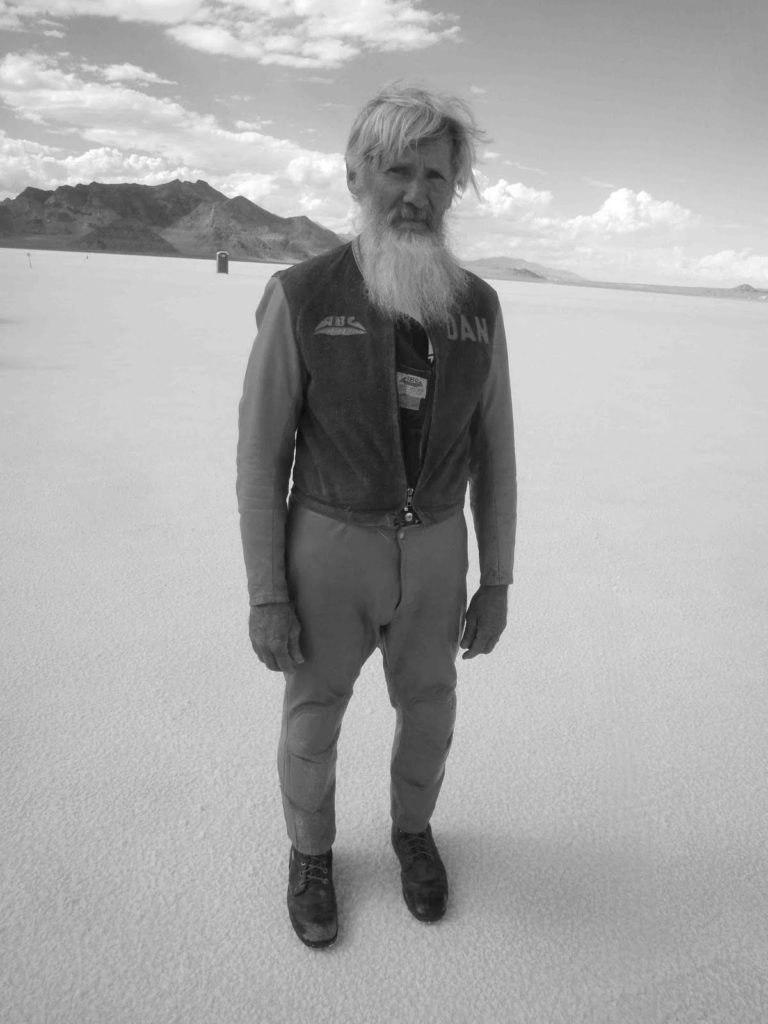
For all its difficulty, for all its harshness, Bonneville remains as romantic as a doe-eyed candlelit dinner with your true love, it is the ultimate temple of going fast for its own sake. There is no reward but a cheap slip of paper with numbers, but something about the history and energy of the place makes you want to Go, man, Go; get on your machine, and nail it. Even in the rental car you’ll have to spend two hours cleaning afterwards…
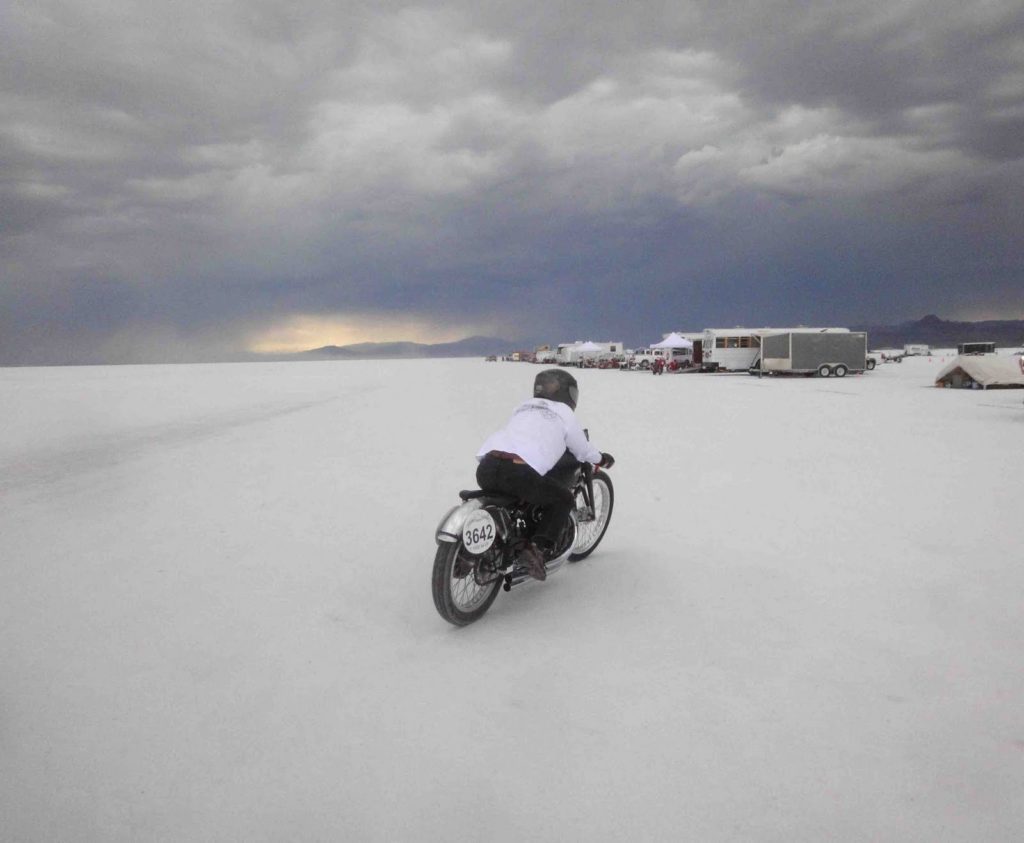
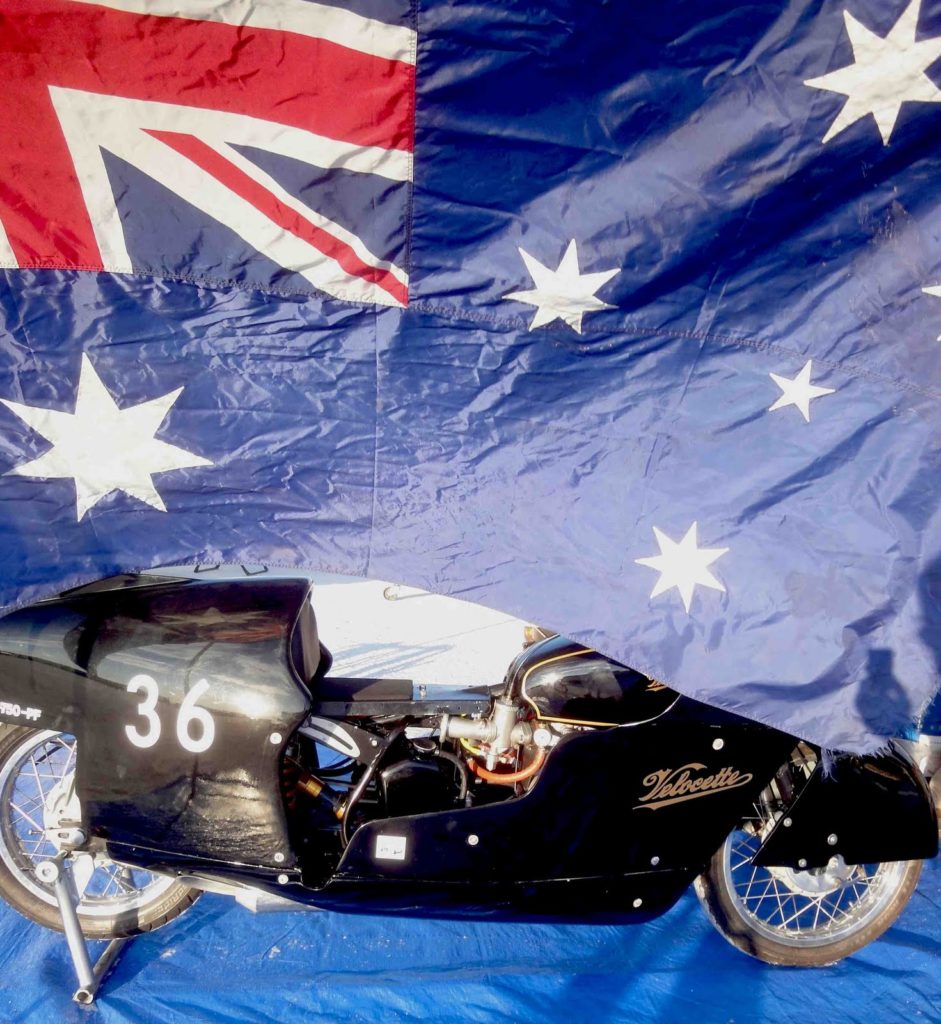
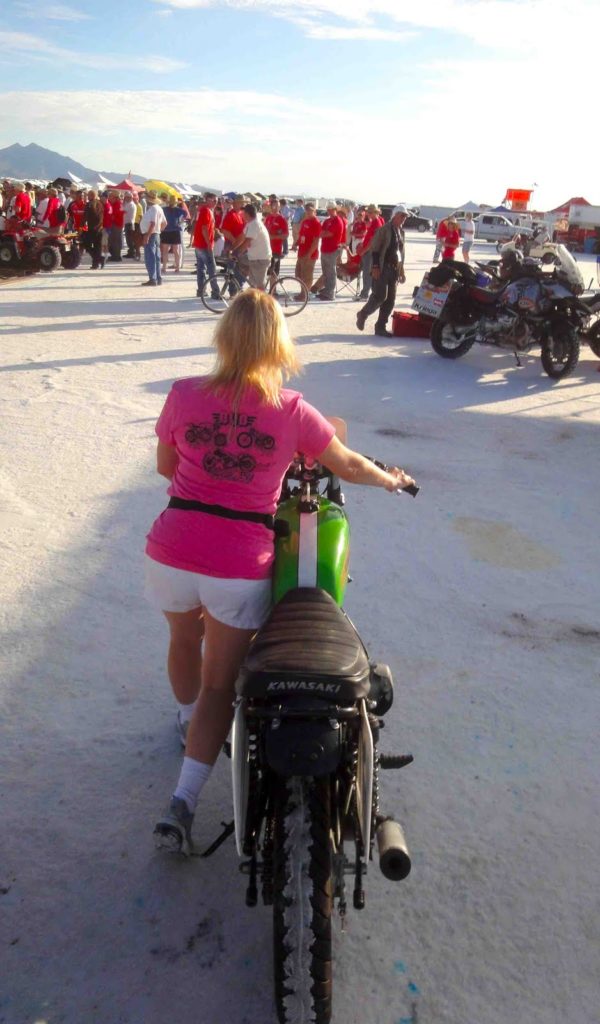
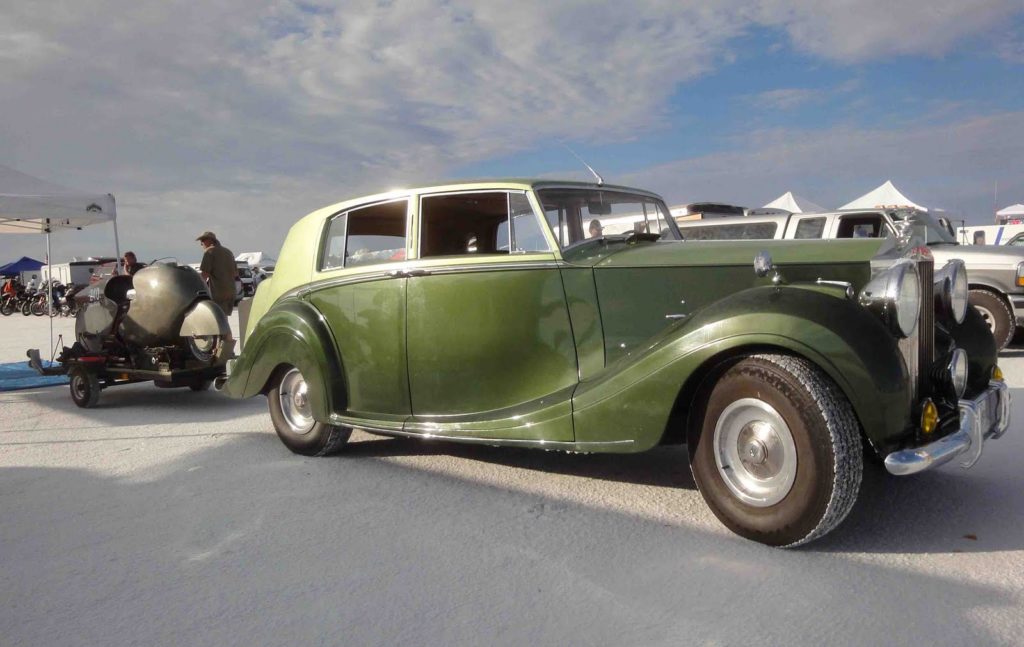
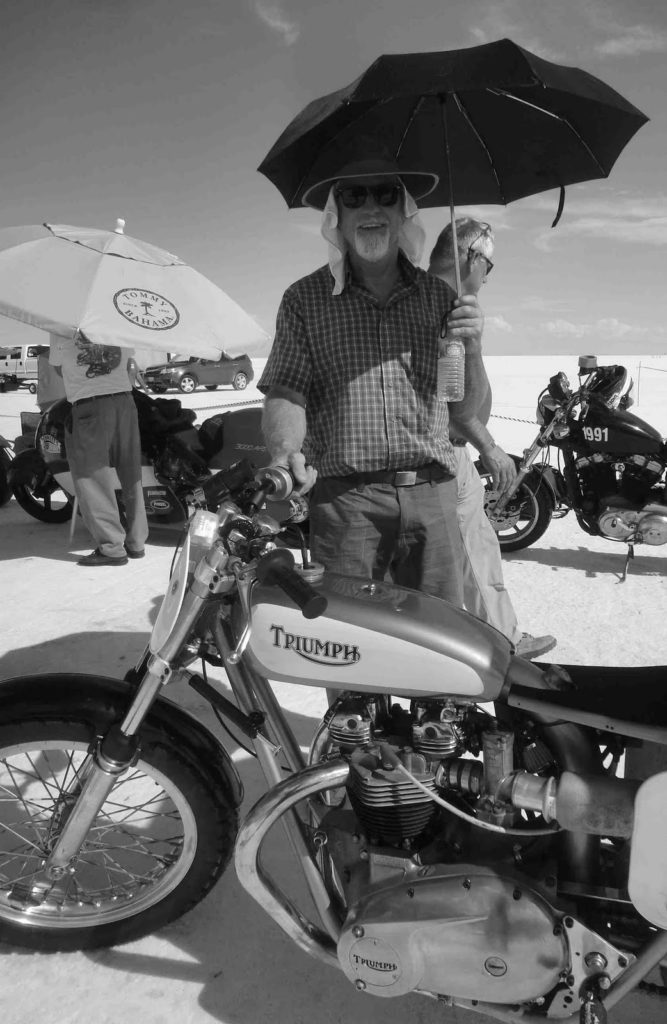
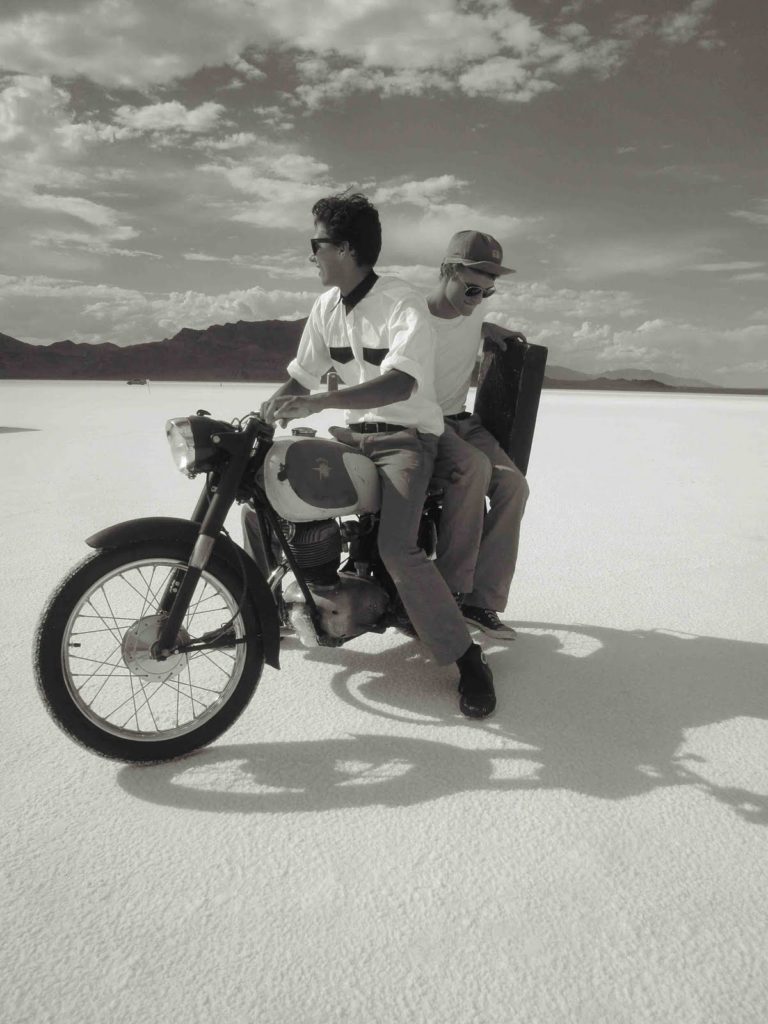
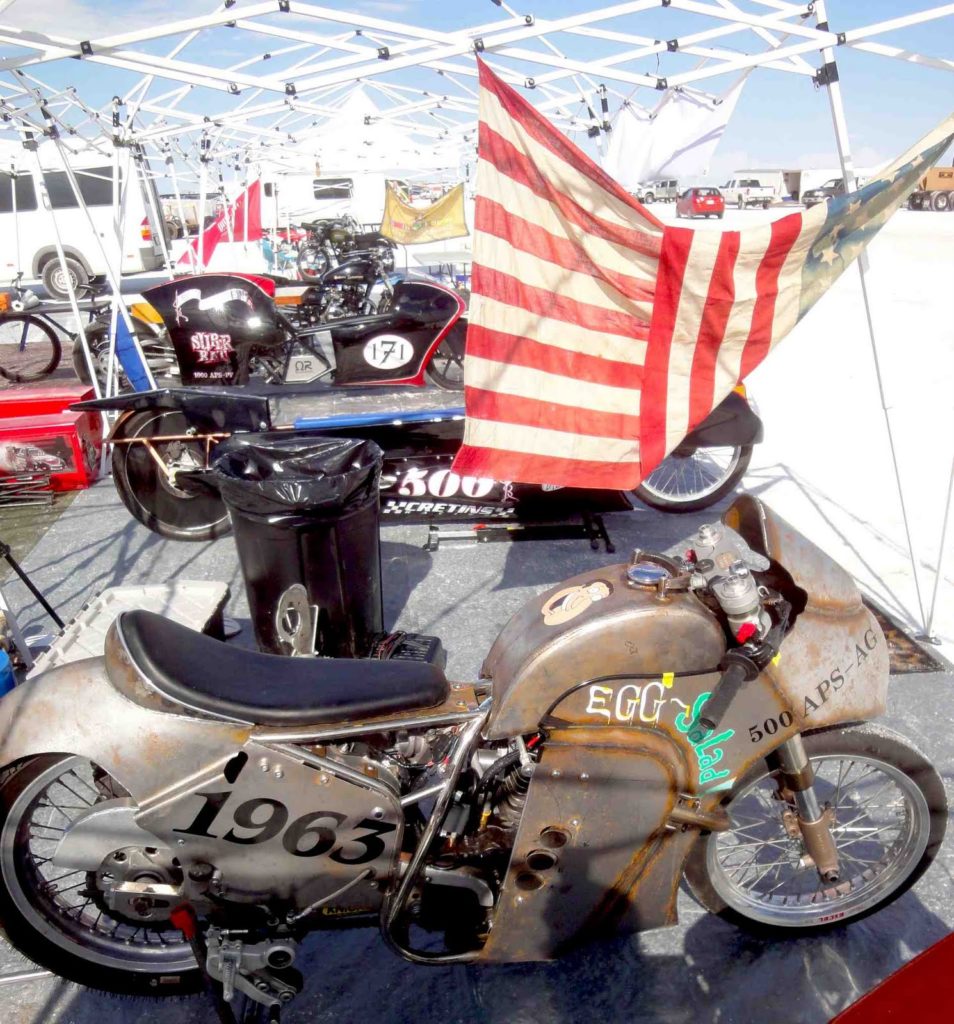
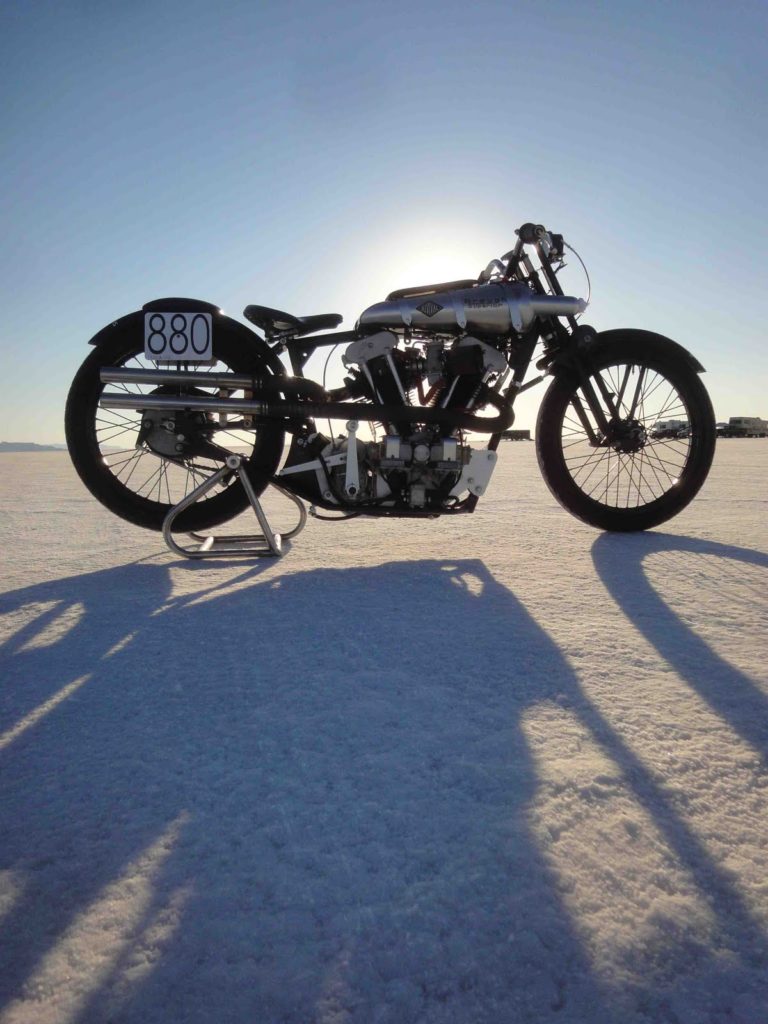
Related Posts
July 8, 2017
The Vintagent Trailers: Mancini, The Motorcycle Wizard
The mechanic that helped debut five of…

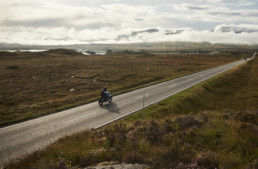

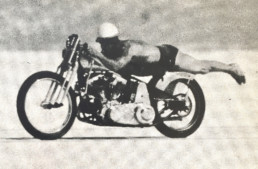
A beautifully written piece on yet another American Icon being destroyed by the ravages of greed , stupidity and blatant lack of concern for the environment despite the economic impact on the surrounding areas by both industry , Salt Lake City and the state of Utah forcing the hundreds that would of made the annual migration to the Flats from across the globe to now look elsewhere … such as S.America ( Ack Attack ) and Australia . And thank you PdO for being among the very few in the motorcycle or automotive press with the cojones to say so without reservation . You’ve got stones good sir .. tempered with more than a fair amount of class mind you … but you’ve got stones . Rock On – Ride On – Remain Calm ( despite all the impending stupidity ) and do please Carry On
GTR 😎
Lovely! Thanks for the Royal Enfield picture.
Nice coverage Paul. Thanks.
Jim A., Tucson, AZ hotterherethanthere!
Absolutely wonderful pix and story, really felt like I was there. Hope you’re heading to Burning Man next, thats the best party in America, and its just around the corner.
Thanks for taking us there through your dang near poetic commentary and rich photos, how would you describe the sounds? With little to absorb or deflect, and the speed and distance traveled by the racers, Bonneville must be a unique and delicious sound track?
One of your best yet …
Paul, that’s an excellent report giving a fantastic impression of the atmosphere on site.
I can’t wait for the next issue to learn more about the success of the Brough Superior crew.
Great pics and great story.
You know Paul, you should charge money for stuff this good 😉
Your fourth photo, the orange colored Rotax engine flat tracker #110, “BBRP” on the cyl head.
That’s Brian Billings Race Products, right here in Bellingham, WA!
~Ric
Being told to keep quiet… greatest post ever Paul.
Got salt Paul?….
Paul, your images and copy really get close to some of the myriad feelings one gets from the Flats. After running a vintage BMW 2002 for 3 years, my racing buddy and I are prepping bikes to take back next year. Bonneville is teasing, brutal, honest and totally addicting at various times. It should be on every gearheads bucket list to attend, especially if you enter.
thanx paul!
highlight for me was the caption which talked about the viking vincent black lightning doing consistant 149s.
that’s where rollie free ‘got stuck’ back when that bike was new, and as everybody knows, the laws of physics are immutable!
only way to go faster is to do what rollie did ;-).
I am sure you do not remember me, but we have spoken in the past. I had asked for guidance in regards to a pre war British bike and you were very gracious in your reply. Anyway, so your most recent article in Cycle World was nothing less than spectacular (Oct ’11) issue. Thanks for all that you do in regards to golden age of motorcyling.
LB
Wonderful pics !!!
Thanks !
Cheers from Lars.
I’m the guy running the little supercharged Indian on the pics.
Beware of any Rolls Royce Wraith on Ebay…It may have latent corrosion issues.
That was great fun on the salt. Nice pic of my wife knitting. We had a great time with Lars. Thanks for sharing the photos.
THROWBACKS had a great time out on the salt as volunteers in red shirts out at Pre-stage this year. We’ll definitely have a team for 2012. Thanks for the killer coverage. Wish we could have met on the salt, I think I saw you riding the viking vincent during our wind hold Wednesday afternoon, white leathers at speed!
Keep the faith!
Do you happen to have any photos of Fritz Kott’s supercharged KHR Harley or supercharged Triumph from years past? The whole family usually showed up in a 73 Ford camper with way too much salt exposure. They also did security detail at the flats for years. He started racing at Bonneville in 1966 with a Hertz GT350H mustang. One of the most interesting people I think I will ever have the pleasure of knowing.
Great write up Paul. Thanks
Phill
Issue is the bauxite extraction. They are suppose to return salt afterwards but don’t. It is stacked across the Interstate. With excess rain this year it washed the silt from mountains and mixed with salt. One of the worse combos.
Yes, Cargill is the firm extracting bauxite from the saltwater covering ‘Lake Bonneville’ every winter. In drawing off the salty water, they draw off the salt that replenishes the Flats every year; as you note, the salt is sitting in huge piles across the freeway from the Flats. Thus, the salt pan is getting thinner every year, and is already at the point of being unusable. This year’s races were precarious, and there was a fatal accident involving participants accessing the race track, while avoiding the worst of the salt. More info is here: http://savethesalt.org/
Paul, l do believe you’ve outdone yourself. What wonderful prose you have shared with the readers. Thank you.